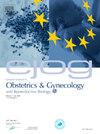Evaluation of clinical usability and reproducibility of the American Society for Reproductive Medicine Müllerian Anomalies Classification
IF 1.7
Q3 OBSTETRICS & GYNECOLOGY
European Journal of Obstetrics and Gynecology and Reproductive Biology: X
Pub Date : 2025-09-01
DOI:10.1016/j.eurox.2025.100425
引用次数: 0
Abstract
Objective
To study the usability, reproducibility and practicality of the revised American Society for Reproductive Medicine Müllerian Anomalies Classification (ASRM MAC2021) compared to the formerly used American Fertility Society (AFS) classification. The main focus of this paper is to present clinicians’ assessment when using these classification systems and to explore possible benefits and disadvantages of the transformation of the AFS into the more recently published ASRM classification. To incorporate all commonly used classification systems, all cases were additionally classified using the ESHRE/ESGE and the VCUAM classification.
Methods
An observational study using a questionnaire and opinion survey was conducted with the goal of comparing clinicians’ subjective usability and reproducibility of the AFS classification with the newly presented ASRM MAC2021 classification. Cases of female genital malformations encompassed a wide range of various anomalies, including vaginal, cervical and adnexal conditions and associated malformations.
Results
The study investigators rated the ASRM MAC2021 classification better in relation to usability and reproducibility compared to the AFS classification. It significantly improved diagnostic precision for vaginal and cervical anomalies and expanded recognition of adnexal malformations. However, challenges remain in addressing associated malformations. Clinicians ranked the ASRM MAC2021 higher than the AFS classification. However, investigators rated the ESHRE/ESGE and VCUAM classifications better in the overall assessment of female genital malformations.
Conclusion
The ASRM MAC2021 classification offers substantial improvements in diagnosing and managing female genital malformations, addressing limitations of the AFS system. With better usability and subjective reproducibility, further refinements are needed to fully address complex associated anomalies — emphasizing the importance of evolving classification systems.
美国生殖医学学会勒氏异常分类的临床可用性和可重复性评价
目的比较修订后的美国生殖医学学会勒氏异常分类(ASRM MAC2021)与原美国生育学会(AFS)分类的可用性、可重复性和实用性。本文的主要重点是介绍临床医生在使用这些分类系统时的评估,并探讨将AFS转换为最近发表的ASRM分类可能的利弊。为了纳入所有常用的分类系统,所有病例都使用ESHRE/ESGE和VCUAM分类进行额外分类。方法采用问卷调查和意见调查进行观察性研究,目的是比较临床医生对AFS分类与新提出的ASRM MAC2021分类的主观可用性和可重复性。女性生殖器畸形的病例包括各种各样的异常,包括阴道、宫颈和附件疾病以及相关的畸形。与AFS分类相比,研究人员认为ASRM MAC2021分类在可用性和可重复性方面更好。它显著提高了阴道和宫颈异常的诊断精度,扩大了对附件畸形的识别。然而,在解决相关畸形方面仍然存在挑战。临床医生对ASRM MAC2021分级的评价高于AFS分级。然而,研究人员认为ESHRE/ESGE和VCUAM分类在女性生殖器畸形的总体评估中更好。结论ASRM MAC2021分类对女性生殖器畸形的诊断和管理有实质性的改进,解决了AFS系统的局限性。有了更好的可用性和主观再现性,需要进一步的改进来充分解决复杂的相关异常——强调不断发展的分类系统的重要性。
本文章由计算机程序翻译,如有差异,请以英文原文为准。
求助全文
约1分钟内获得全文
求助全文
来源期刊

European Journal of Obstetrics and Gynecology and Reproductive Biology: X
Medicine-Obstetrics and Gynecology
CiteScore
2.20
自引率
0.00%
发文量
31
审稿时长
58 days
 求助内容:
求助内容: 应助结果提醒方式:
应助结果提醒方式:


